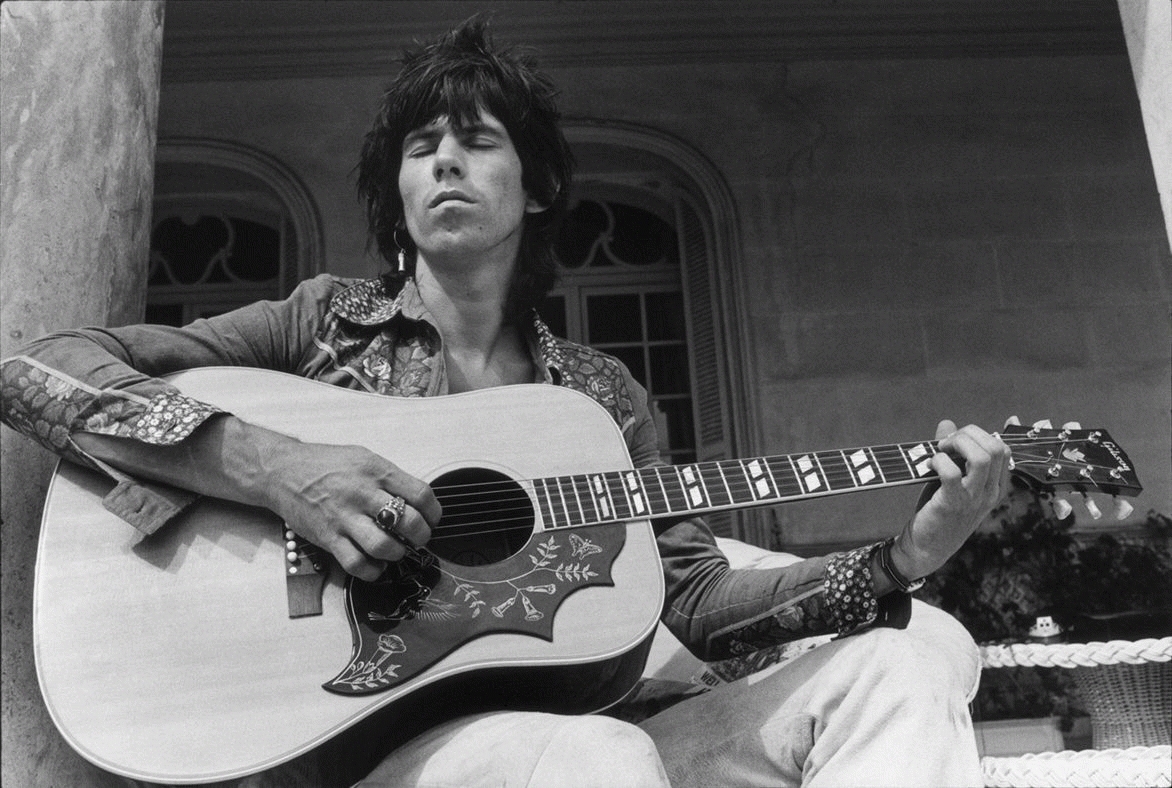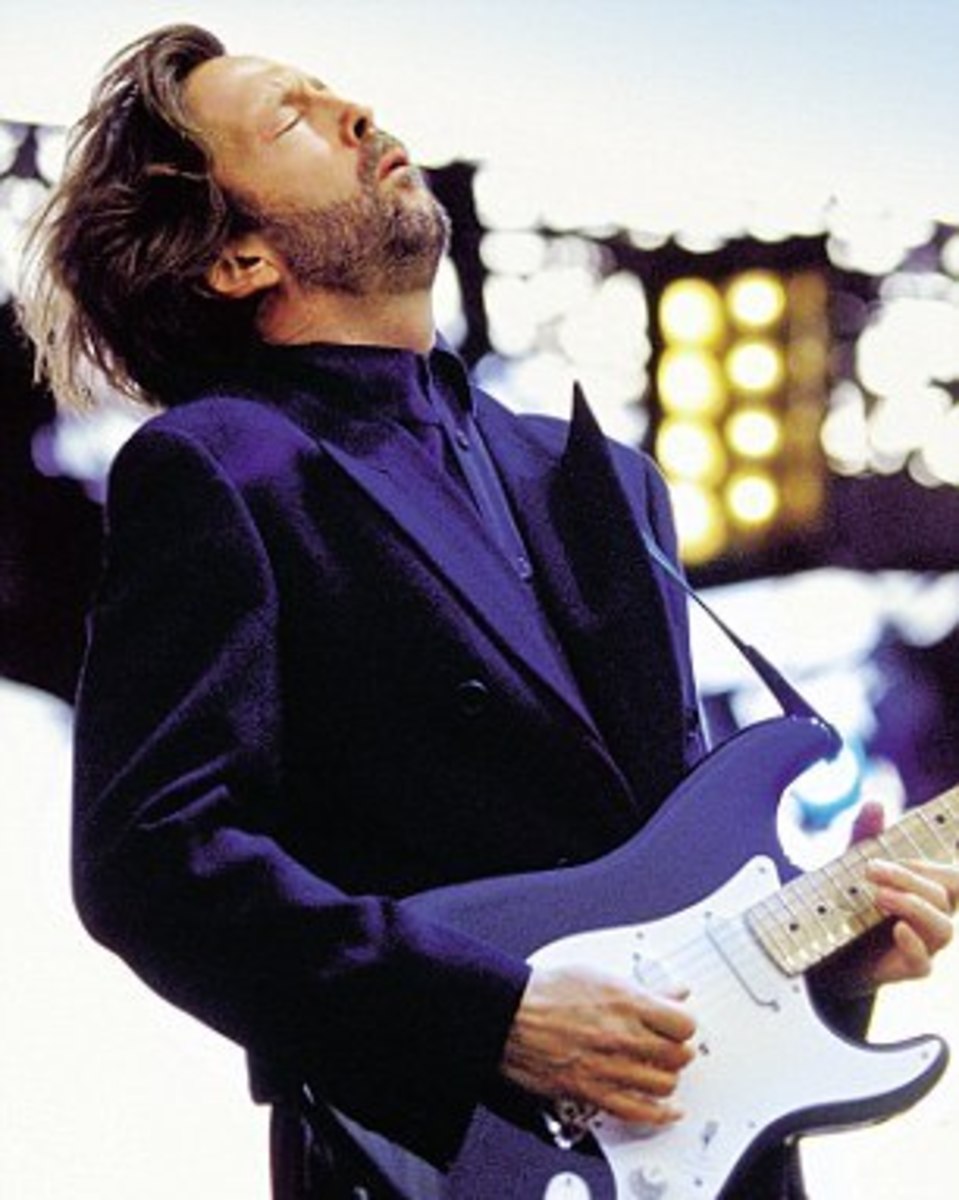
I was going to write another article about practicing, but I got a really good question from a reader in response to last week’s article.
Here’s the question:
I’m an old new player, got my guitar after I retired and have been enjoying and struggling at the same time since. Pick it up every day for ½ hr. or so. Rhythm and timing are a challenge for me. Both are more of an issue when playing with a group. Not being familiar with songs, and chord changes, played in a group, I watch other players fingering and copy that. Reaction time puts me off a least a ½ beat to start with. Most lessons/teaching include everything except timing/rhythm, wish more information and lessons were available for those of us who are rhythm challenged.
Bold emphasis is mine (jake).
Oh man! Yes! Such a popular/common issue – especially with adults. Kids – somehow – pick this stuff up easier.
I have a tip that may help…
CLOSE YOUR F***ING EYES!
I don’t mean to sound insensitive. Just trying to get your attention.
Close your eyes when you’re playing.
See the following examples:
Here:


Or all of these examples.
They’re not doing it to be cool. In fact, some may argue that “guitar face” is decidedly UNCOOL.
Regardless of your position on the matter – the point is: you can play the guitar without looking at what you, or anyone else is doing.
To really get into this, let’s talk about:
- Why You Should Close Your Eyes
- My Real Life Blind Student
- How to Close Your Eyes and Play Guitar
Why You Should Close Your Eyes
There are two main reasons you should practice with your eyes closed:
- Speed: You will get faster (in all aspects of playing)
- Musicality: You will develop a good sense of musical timing
Speed
Here’s the problem that the emailer at the beginning of this article had: Reaction time puts me off a least a ½ beat.
I think it is excellent that this person is WATCHING what other musicians are doing (instead of focusing on inward or themselves). Too many players are too focused on what they are doing – and not listening and watching other people.
Good work!
The problem comes when you rely on visuals too heavily.
It slows you down.
You can’t…
… watch the other person
….check your fingers
…switch the chord
….strum the chord…
…By the time you do this, the chord is over and you’re behind.
So instead, focus on what you’re doing and what comes next. Focus on LISTENING to the other players, not watching them.
You will be able to switch faster and react quicker.
Musicality
In addition to moving faster. You’ll start to develop a better musical sense. In other words, you’ll be able to HEAR the chord changes. You’ll be able to HEAR when something is wrong (rather than looking at it or feeling it in your fingers).
It sounds a little weird.
But think about all the stuff that you do now without even thinking about it:
- how you hold your pen when you write
- how you drive a car without thinking about ever little move
- how you tap your foot to a song without thinking about the beat
By focusing on the SOUND, you start to develop this sense of music. You’ll hear when something you play is incorrect. You’ll start to ANTICIPATE when the chord change is coming.
And (probably the coolest thing), you’ll be able to figure out how to play songs by ear (which will seem like MAGIC to someone who can’t do this).
Oh – and it’s not something you’re born with – it’s just like any skill you can develop and practice.
I used to NOT be able to do this – now I can. Just a lot of repetition and practice. It takes time.
My Real Life Blind Student
Before I talk about how to play and practice with your eyes closed, I want to talk about Alan.
Alan emailed me in the Fall of 2018. He wanted to start guitar lessons with me.
Here’s what Alan had to say in his initial e-mail to me:
I have always wanted to learn to play the guitar. I tried a couple of times in my youth, but did not keep up with it. I am now 67 and retired. I should tell you I am blind and wear hearing aids in each ear. I also do not have any formal training in music, so I may be more of a job than you want to tackle.
“More of a job than I want to tackle”!! HA!!
Challenge accepted.
Since that initial e-mail, Alan and I have been working together for almost two years.
He can do fingerpicking and strumming. He can play melodies for his grandkids (they love Mary Had a Little Lamb and Jingle Bells), and he can play pretty much any open chord.
During our most recent weekly lesson Alan was easily transitioning between the chord changes in “The Gambler”.
Initially, the hardest part for Alan was the finger pain (join the club), and remembering the chord progressions.
Once he got the chords down, he was good to go. It’s all just muscle memory and little tactile adjustments.
Oh – and OF COURSE – LISTENING to what he’s doing.
If he’s playing a chord incorrectly – the ONLY way he can tell he is wrong is by the sound of it – possibly the feel of it too.
It hasn’t been easy and there are still struggles; but Alan’s persistence is inspiring.
Alan’s also a perfect demonstration of why we don’t have to look at what we’re doing when we play.
How to Close Your Eyes and Play Guitar
Now we’ll talk about practice techniques. There are a few non-visual methods I like.
The Partial-Look Method
With this method, you can only look at your chords when you think you’ve made a mistake.
It’s tough – and you have to be honest and disciplined with yourself – no peeking.
Strum through your chord progression, take your time (but not too much time).
If something doesn’t feel or sound right, go ahead and take a peek at what your doing.
Then make your adjustment and continue practicing.
If you find yourself making the same mistake over and over again… GOOD NEWS: Now you know what you need to focus your deliberate practice on.
If you find yourself looking at your hands and noticing that you’re NOT making any mistakes… time to move on to the next practice method…
The No-Look Method
With this method, you practice without EVER looking at your fingers.
You will notice any mistakes because 1) They will sound wrong/bad or 2) Because your fingers will FEEL like they’re in the wrong spot. And if you DO make a mistake, just keep on going.
You can try to correct your error, but it’s probably better to just move on and keep the song or chord progression going.
If you find that you’re messing up in the same spot over and over again… GOOD NEWS: Now you know what you need to focus your deliberate practice on.
If you find yourself sneaking a peek every so often… it’s time to move on to the next practice method….
The “I’m a cheater and have no self-control” Method
Let’s be honest… most of you are gonna fall in to this category.
Most of the time you won’t even REALIZE you’re looking at your fingers. It’s almost like a reflex.
Time to enlist the help of some sort of aid.
I recommend having a friend, child, spouse, or anyone really: hold a piece of paper over your hand, blocking the view of your hand doing the chords (usually left hand).
The paper shouldn’t touch you or your guitar, but it should obstruct your view so that when you “accidentally” turn to look at your hand BAM! there’s a paper in the way!
Busted.
If you don’t have a paper-holding-assistant. Any other means of blocking the view of your left hand is fine: blindfold, eyes closed, stick your hand around a corner, or behind a curtain.
Final Thoughts
There are tons of other ways to speed up your chord changes (or any aspect of your playing). I’ve talked about a few ways before to change chords faster: here and here.
The visual aspect of playing is often overlooked.
It’s important to remember: The goal IS NOT to stop looking at your hands for good. Nor is it to never look at the players around you.
But you cannot rely on others to dictate what you are going to do – some of that has to be learned, memorized, and practiced.
There will be times when you HAVE to look at your hands. That’s ok.
But don’t let your sight be a crutch that keeps you from progressing.
When all else fails… CLOSE YOUR F***ING EYES!
One last thing…
I was going to hit “publish” on this article when it occurred to me that part of Alan’s progress had to do with having weekly lessons with a teacher. If you don’t have a teacher, contact me here to set up online lessons (I use Skype, Facetime, Google Hangouts, and Zoom).
Some people need only a lesson or two to correct their mistakes (that they don’t even KNOW they’re making). Some people need the accountability of having a steady teacher to set them straight!
Image Sources:
https://sfae.com/Artists/Dominique-Tarle/Keith-Richards-Playing-Guitar-Outside-with-Eyes-Cl https://hubpages.com/entertainment/Guitarists-Playing-With-Eyes-Closed-The-Very-Best-Guitar-Faces https://www.thecurrent.org/feature/2017/02/06/jimi-hendrix-in-through-the-eyes-of-the-worlds-best-guitarists
4 replies on “Even a Blind Guy Can Do It (or How to Change Chords Faster by not Looking)”
Such a wonderful blog about even a blind guy can do it or how to change chords faster by not looking and I appreciate your effort for bringing this in to notice. Great blog indeed, will visit again future to read more!!
Amazing content man, thank you so much.
Practice eyes closed gave me ability to change cords effortlessly. Getting used it was difficult but once your set then this is going to be lit!…
Awesome! Glad it helped. Keep me posted on your progress!
Amazing content. It really helped me to nail the ability of effortless chord changing. But it took me a month and half to get used to it.